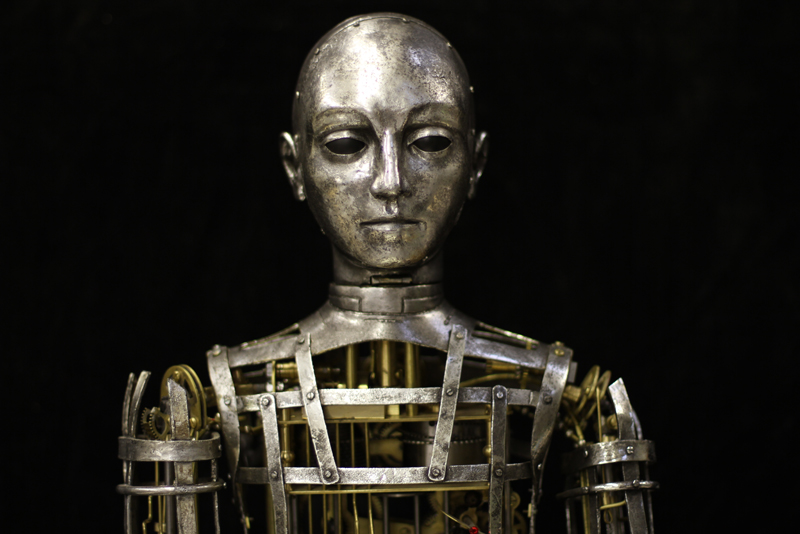The following article was originally published in Good Furniture Magazine, October, 1915.
Good Furniture and the Moving Pictures
by William Laurel Harris
Few people realize the prodigious growth of the motion picture business or how this sudden development of public entertainment has reached out into every walk of life. Not only in our big cities but in every town, village and hamlet the motion picture theatre holds its place and prospers. Ten million people, it is said, visit the “movies” every day. It has been said that through the “movies” a propagandum of art might be established to spread grace, beauty and culture throughout the land. It has even been suggested that architects might take a hand and find their vocation in directing the composition of scenes for the film makers.
With these ideas in mind, it was the intention of the writer to develop the theory of such a work in a solemn and learned editorial. But first he had the happy thought of visiting the people that have to do with busy “movies” and of learning first hand just how the situation stands from their point of view. His first impression, of course, was “confusion worse confounded.”
The point of view of one man interviewed is of special interest to readers of Good Furniture. He is a dealer and maker of furniture in every style to be used in making motion pictures. His main shop on a side street near Sixth Avenue is jammed from basement to attic with furniture piled tier on tier in every direction. Censers, sanctuary lamps, beer-hall signs, chandeliers and lanterns in every style are hanging from the ceiling. Pictures are along the walls, stand in corners and are piled against the stairway. Here one sees portraits of Abraham Lincoln, Julius Caesar, Napoleon, Frederick the Great and decorative panels, stained glass windows of religious subjects, with modern landscapes and figure work of a widely varied character, all jumbled up together. In fact, everything in the way of furniture and furnishing is here represented in some way.
Noticing the surprised look on the wrriter’s face when he beheld the miscellaneous character of furniture and curios heaped up in all directions, the owner of the place said apologetically, “I never know what they will want next.”
At the rate of seven van loads a day this furniture goes out to the “movie” studios. Originally this shop of motion picture furniture was an antique dealer’s store in the theatrical district, renting things now and then for dramatic productions. About six or seven years ago calls began to come from motion picture producers for furnishings to make their scenes. One. day a request will come for the stuff to make the studio of an old Italian artist, a man of culture who has fallen into misfortune at the end of his life. The furniture must be fine but dilapidated, with some of the scats out of the chairs, and there must be portraits of great men, including one of Guttenberg. “As for the furniture, we don’t want any theatrical props; we want the real stuff.”
And so the orders go. The next one may be for the furnishings of a monastic cell or it may be for Napoleon in all his glory or for the court of Louis XIV.
“Yes,” the manager of this curious furniture store told me, “these movie men when they thought out their business, thought it out all wrong. They thought they wanted fakes and the bigger the better; but now they find they want the real thing and that is what draws the crowd.” So it appears that instead of the motion picture men educating the public, as has been sometimes suggested, the public has educated them and taught them the value of good furniture.
This enterprising furniture man then proudly took the writer into his special order department and explained how it often occurs that a motion picture producer suddenly finds he must have a picture of the Petit Trianon or of a ball room at Versailles, and no one in town has the furniture to make the scene. “He then orders it made expressly, after drawings out of books on historic furniture and furnishings. Of course, he will not keep the furniture; we charge him for making it and then later on we can rent it again. Then, too,” continued the furniture man, “we frequent the auction rooms and people think we are crazy, the prices we pay. For if we really want a table, a chair or a whole bed room suite, we never let it go. Why, we have a bed room suite that old Commodore Perry gave to Mrs. Belmont for her own use, all carved over and over with the birds cut in the wood. How all these ‘movie’ men are getting wise on styles! If we should send a Jacobean suite for a French chateau, you ought to hear the howl. Our business has grown because we are willing to take lots of trouble, and we have fine things that can give character to any show. We have the biggest business of this sort, in New York and we like the fame and reputation. But the real reason why we have fine statuary, pictures, tapestry and good furniture is because our bread and butter is in it.”
Originally published in Good Furniture, October 1915, by William Laurel Harris




